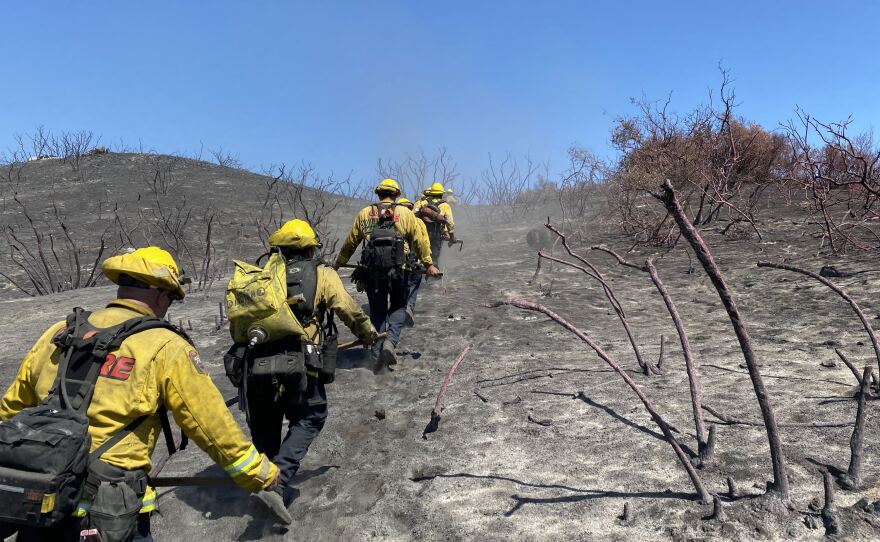Firefighters continued working Wednesday to get full lines of control around the smoldering remnants of a wildfire that spread over hundreds of acres in San Diego and Riverside counties after erupting last weekend at the edge of Cleveland National Forest in rural Murrieta.
As of late Wednesday morning, crews had the burn area of the 1,427-acre blaze, dubbed the Chaparral Fire, about 80% contained, according to Cal Fire.
At midday Tuesday, authorities lifted all evacuation orders prompted by the fire, allowing residents of neighborhoods north of Tenaja Truck Trail, south of Calle Cielo, east of Calle Collado and west of Calle Be Bietol to return to their homes, the state agency reported.
The blaze, which leveled two structures and left a firefighter with minor injuries, broke out for unknown reasons about 12:45 p.m. Saturday near the intersection of Cleveland Forest and Tenaja roads in the Cold Springs area, according to the Riverside County Fire Department.
At the height of the blaze, personnel with Cal Fire, the U.S. Forest Service, Murrieta Fire & Rescue, and the Corona and Hemet fire departments — a contingent of more than 500 firefighters — battled the blaze on the ground and aboard firefighting airplanes and helicopters.
Authorities urged motorists Wednesday morning to drive carefully around the site of the blaze since firefighters were still in the area, and reminded the public that non-residents should stay away from the area entirely due to fire-safety closure orders in effect for the national forest through Sept. 17.






